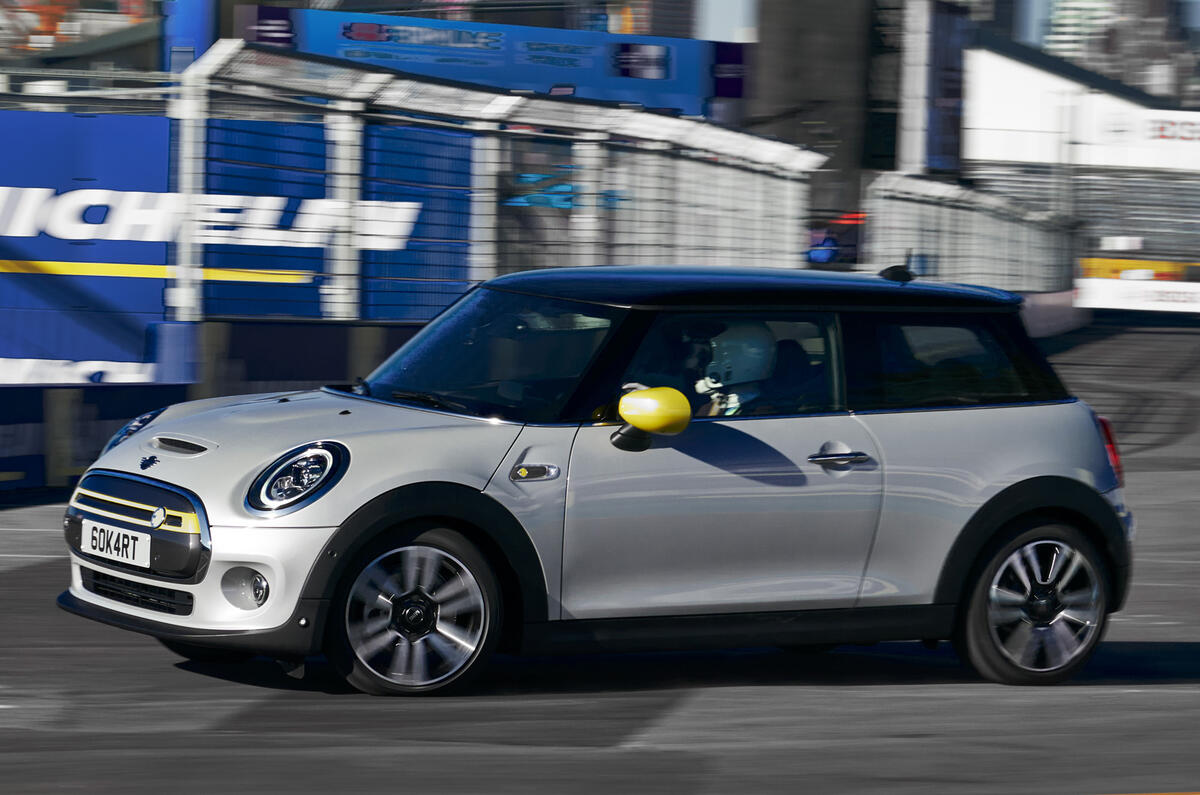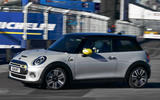The Mini Electric is the launching point of a bold new era for the venerable British brand – but the first impression you get from driving one is reassuringly familiar. Perhaps the biggest compliment you can pay Mini’s first series production electric car is that it drives and handles exactly as you’d expect a Mini to, regardless of powertrain.
Which, of course, is no bad thing, because the classic Mini characteristics – sharp steering, rapid direction changes, nimble handling – represent both a formula that works, and exactly the sort of characteristics you’d want from an electric city car.
Much like when BMW first revived the brand with the hatch in 2000, the aim for the British-built Mini Electric (known as the Mini Cooper S E outside the UK) is to wrap up a progressive modern design with nostalgic-tinged appeal. And a brief run in a production version on the Brooklyn Street Circuit that hosted the recent ABB Formula E Championship New York ePrix suggests that goal has been achieved.
What is the Mini Electric like?
Like any other Mini three-door hatch, when you first set eyes on it. That's aside from a few visual touches, mostly based around the front grille and a handful of small badges – and the obvious lack of engine noise when you hit the start button. Which is probably a good thing, since it's a proven, popular design, and there'd be little point in having an electric Mini that didn't really look like a Mini. It’s a notably different tack from the designed-to-be-different BMW i3, which the Mini takes much of its powertrain from.
The production interior is highly familiar as well, using the retro-fused dash layout as the petrol-powered Mini hatch. So there are big, round driver info display and infotainment screens, with plenty of old-school toggles and physical switches, including the classic start/stop switch in the middle of the dashboard.
It contrasts sharply with the minimalist, touchscreen-dominated interiors of many electric cars currently being developed, but the links to the current petrol-powered Mini – and, in turn, back to Alec Issigonis’s original creation – work well.
There are some minor differences, if you look hard enough. The most notable is the replacement of the manual handbrake with an electronic one for the first time, to match the gear-free electric powertrain. There is also a mode that sets the level of energy the car recaptures under braking, which the digital display gets new screens showing energy usage, power levels and so on.
Under the retro skin, the Mini Electric borrows much of its powertrain from the BMW i3, with a 32.6kWh T-shaped battery powering a 181bhp and 199lb ft motor. Unlike the i3, power is sent to the front wheels only, resulting in a -062mph sprint of 7.3 secs, and a top speed of 93mph. The battery size gives a WLTP-certified range of 124-144 miles, which is around the same as the forthcoming Honda E, but less than rivals such as the Peugeot e-208 and Vauxhall Corsa-e will offer.































Join the debate
Add your comment
Charge rate
Range not ideal for some but for a 2 car family 100+ miles is fine. Shame charging rate wasn't mentioned as on very rare occasions being able to go from 20%-90% capacity in 25 minutes is going to be important.
A quick'ish £25k BEV bargain
xxxx wrote:
Given this article clearly states the MINI drive train is directly related to that in the BMW i3, can you not simply look up the figures for the latter and take those as approximations?. There will be every piece of information available to potential buyers, so no excuse for buying if it does not fit in with one's needs.